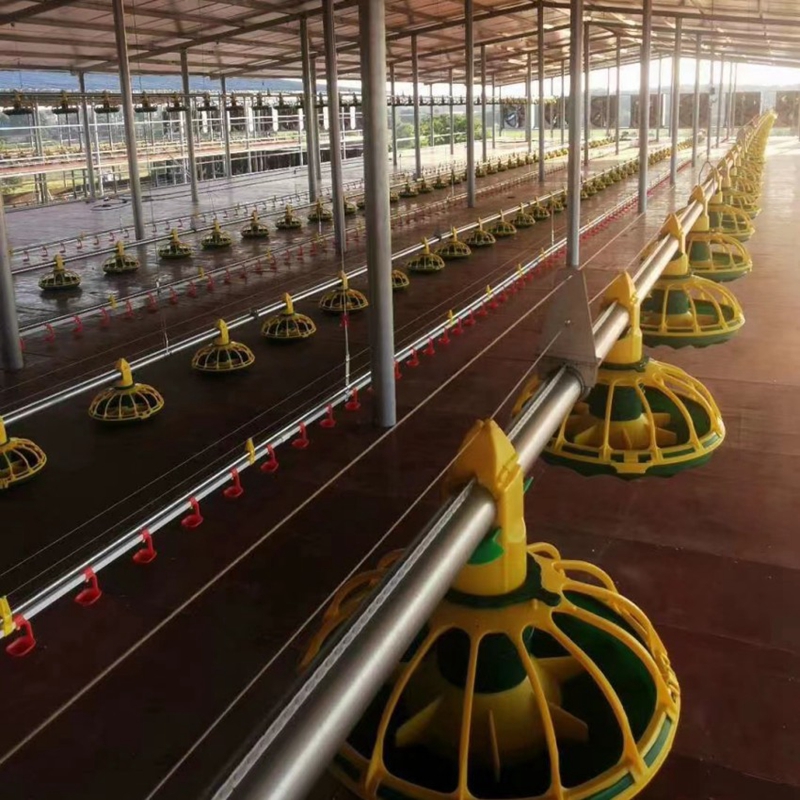Effective Cooling Solutions for Greenhouses Using Evaporative Pads for Optimal Plant Growth
Oct . 12, 2024 20:36 Back to list
Effective Cooling Solutions for Greenhouses Using Evaporative Pads for Optimal Plant Growth
The Importance of Greenhouse Evaporative Cooling Pads
In the ever-evolving world of agriculture and horticulture, the demand for sustainable and efficient climate control methods in greenhouses has never been higher. Among the various technologies available, evaporative cooling pads stand out as a critical component for maintaining optimal growing conditions. By harnessing the principle of evaporative cooling, these pads play a significant role in enhancing plant health and maximizing yield.
Understanding Evaporative Cooling
Evaporative cooling is a natural process that occurs when water evaporates, absorbing heat from the surrounding air. This mechanism can be harnessed to cool air in large, enclosed spaces such as greenhouses. As warm air passes through water-saturated pads, the water absorbs heat, causing the air temperature to drop. This cooled air can then be circulated throughout the greenhouse, creating a comfortable environment for plants.
Components of Evaporative Cooling Systems
A greenhouse evaporative cooling system typically consists of three main components cooling pads, a water distribution system, and a fan. The cooling pads, made from specially designed materials that promote water retention and evaporation, are placed strategically along the exterior walls of the greenhouse. A water distribution system ensures that the pads remain continuously moistened, while high-efficiency fans are employed to draw in warm air and push cooled air throughout the growing area.
Advantages of Using Cooling Pads
1. Temperature Regulation Maintaining optimal temperature is essential for plant growth. Evaporative cooling pads can significantly lower the temperature inside a greenhouse, often by 10 to 30 degrees Fahrenheit. This creates a more stable environment conducive to healthy plant growth.
greenhouse evaporative cooling pads

2. Humidity Control The use of cooling pads not only cools the air but also helps maintain appropriate humidity levels. This is particularly beneficial for plants that require specific humidity for optimal health and productivity.
3. Energy Efficiency Compared to traditional air conditioning systems, evaporative cooling is much more energy-efficient. It utilizes the natural cooling effect of water evaporation, leading to lower energy consumption and reduced operational costs. This eco-friendly approach aligns with the growing demand for sustainable agricultural practices.
4. Enhanced Air Quality By continuously circulating air, evaporative cooling pads help improve air quality within the greenhouse. This is critical for preventing the buildup of pathogens and pests that thrive in stagnant air. Improved air circulation also ensures that plants receive adequate carbon dioxide for photosynthesis.
5. Versatility Evaporative cooling pads can be used in various types of greenhouses, from small hobby setups to large commercial operations. They are adaptable to different climates and can be easily integrated into existing greenhouse systems.
Installation and Maintenance
Installing an evaporative cooling system involves careful planning and consideration of greenhouse design. Proper positioning of cooling pads is crucial to ensure optimal airflow and cooling efficiency. Regular maintenance is also essential to keep the system functioning effectively. This includes cleaning the pads to prevent algae buildup, checking the water distribution system for clogs, and ensuring the fans are operating smoothly.
Conclusion
As the agricultural sector faces challenges posed by climate change, the implementation of innovative cooling solutions like evaporative cooling pads becomes increasingly important. These systems offer a sustainable and cost-effective way to maintain ideal growing conditions, supporting the health and productivity of crops. By investing in evaporative cooling technology, growers can ensure that they are not only meeting the needs of their plants but also contributing to a more sustainable future for agriculture. With the growing interest in environmentally friendly farming practices, evaporative cooling pads will likely continue to gain importance in the design and operation of modern greenhouses.
-
Hot Sale 24 & 18 Door Rabbit Cages - Premium Breeding Solutions
NewsJul.25,2025
-
Automatic Feeding Line System Pan Feeder Nipple Drinker - Anping County Yize Metal Products Co., Ltd.
NewsJul.21,2025
-
Automatic Feeding Line System Pan Feeder Nipple Drinker - Anping County Yize Metal Products Co., Ltd.
NewsJul.21,2025
-
Automatic Feeding Line System - Anping Yize | Precision & Nipple
NewsJul.21,2025
-
Automatic Feeding Line System - Anping Yize | Precision & Nipple
NewsJul.21,2025
-
Automatic Feeding Line System-Anping County Yize Metal Products Co., Ltd.|Efficient Feed Distribution&Customized Animal Farming Solutions
NewsJul.21,2025






